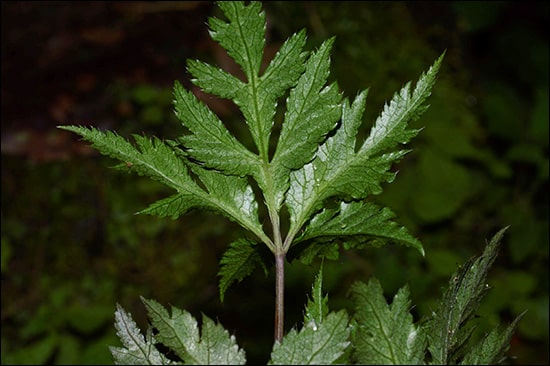Mameera / Golden Thread Herb (Coptis Teeta)- Ayurvedic Properties, Effects On Doshas & Dosage
Description
Ayurveda treatment strategy started in the Indian subcontinent millennia prior has been the most normal approach to treating illnesses. As the name shows, Ayurveda is genuinely a life science that will restore your body’s strength and immunity to fight various diseases. It will give you a recharged body and brain. Ayurveda thinks that the human body is a piece of nature. What’s more, the body contains three doshas viz. Vata, Pitta, and Kapha in balance. The disturbance in the balance is the reason for afflictions. The Ayurveda medications, alongside diet control and actual activity of the body like yoga, are recommended to oust the overabundance of dosha and recover the balance. Ayurveda generally centres around the flourishing of the patient. The regular intake of medicines will help out the various entities to cure perfectly, as well as, resuscitate the body and mind. Not at all like the vast majority of the other treatment techniques, Ayurveda medications make no side impacts. Neither one of those should be followed for a longer period. Once you have finished the errands of treatment and reestablished your healthy body, you really need to pursue any further medication in the future. Regardless, the experts will urge you to change your lifestyle and dietary control for a stronger and healthy life. With these wonderful properties, we are going to discuss a new herb that gives us various health benefits and manages several health issues.

General Information
As per a variety of climatic zones, restorative plants change for their event on various slopes. A portion of the restorative plants is conveyed in high potential while specific others continue draining from their regular environment and prompt elimination, for example, Coptis teeta. This consumption is because of high tension for their unsystematic abuse through development, extension of urbanisation, farming area and street advancement as well as a few regular catastrophes like land sliding, and so on. Development of restorative plants in the area has additionally been embraced in enormous scope for acclimatisation of plants filling in one section to another as needed. Coptis teeta belongs to the family Ranunculaceae and is also known as the golden thread herb in English. This herb is located in the upper borders of the hills of Mishmi and there it is famous with the name of Mishmi teeta. This is widely grown in China and is considered the best Mameera.
Special Note About This Plant
- By Acharya Priya vrat Sharma, this herb is described under the chakshushyadi Varga which means it will help to flourish the eyes.
- Its roots consist of a very special compound that is named Berebrine in 18.3 percent.
- This herb is said to be good in pacifying all the doshas due to its various properties with the ushna gunna, it helps to alleviate the Vata dosha and with ruksha and tikta gunna, it helps to pacify Kapha and pitta dosha.
Ancient Verse
Shloka
ममीरा तिक्तमूलास्यात् कामरूपसमुद्भवा।
स्निग्धखण्डितपत्रा च सितपुष्पाऽतिक्तका।।
तिक्तमूला कटुस्तिक्ता रूक्षोष्णा दीपनी सरा।
चक्षुष्या पाचनी रूच्या कफपित्तहरा मता।।
यकृदुत्तेजनी चैव विषमज्वरनाशिनी।
नेत्रामये यकृद्रोगे कुष्ठे शोथे कफामये।।
कासे श्वासे तथा मूत्रकृच्छ्रे मेहे च पूयजे।
ज्वरौतत्रिकदौर्बल्ये ज्वरे चापि प्रशस्यते।।
Reference – Dravyaguna
Interpretation of Shloka – Mameera’s root is bitter in taste and acts as an aphrodisiac, its leaves are toothed, white-colored flowers that are bitter in taste. Its leaves are pungent, bitter in taste, dry, hot, an appetiser, and laxative. It helps in glowing eyes, improves digestion, enhances the taste of food, and is helpful in pacifying Kapha and pitta dosha. This is a liver-protective herb, that acts to alleviate typhoid fever, eye diseases, and various inflammatory diseases. Cough, other respiratory diseases or any type of urinary disease or bleeding illnesses, and any kind of weakness or fever can be cured by this herb.
Systemic Classification
- Botanical Name – Coptis teeta
- Family – Ranunculaceae
- Genus – Coptis
- Species – C. teeta
Vernacular Names
- In Sanskrit – Tiktmoola
- In Hindi and Malayalam – mameera, mameeri, haldiya bachnaag
- In Gujarati – mameero, mameeri
- In English – Golden thread root
Habitat
There are vital reasons behind the depletion of this herb in the northern Himalayas like Increasing demand for herbal products, depletion of natural habitat, over-exploitation from natural resources, Lack of agro-technology or due to excess gazing by wandering animals, changes in our environment and highly interference of population in hilly areas and spreading waste.
- This plant prefers to grow in the extreme part of the northeastern states, in moist, shady places in humus soil.
- This is a small, stemless perennial evergreen herb, its roots may regrow after years and yellowish from the outer side, and from the inner side it is kind of golden yellow in colour.
- Its rhizome is fibrous, and bitter in taste, its leaves are 3 to 12 inches long.
- Its leaves are 2 to 3 inches long.
- Its petioles are extremely lengthy of 8 – 20 cm
- white or yellowish colored few-flowered or blossoms little.
- Seeds are many in the count and are dark in colour.
Ayurvedic Properties
- Rasa (Taste) – Tikta (Bitter).
- Guna (Quality) – Ruksha (Dry)
- Veerya (Potency) – Ushna (Hot)
- Vipaka (Post digestive effect) – Katu (Pungent)
- Karma (Action) – Balances all doshas
- Projyang (Part used) – Roots are used
Effects On Doshas
- This herb balances all doshas due to its various properties with the ushna gunna, it helps to alleviate the Vata dosha and with ruksha and tikta gunna, it helps to pacify Kapha and Pitta dosha.
- This herb has various properties like lekhana (scrapping) in nature, anti-inflammatory, and chakshushya (good for eyes).
Practical Uses
- This herb is helpful in balancing all the doshas it can be recommended for all diseases but it mainly gives its best results in Kapha-pittaja vikaras.
- In catarrh like diseases, this is perfectly used by the local application, in the form of a paste, or in the form of kajal (liner), so is very helpful in the weakness of vision, cataracts, etc.
- When it is used internally, it helps to enhance the low digestive fire and is effective in relieving constipation.
- This is hepatoprotective and cardiogenic along with having great anti-inflammatory problems.
- In the respiratory system, this is used to cure many diseases like cold and cough, sinusitis, asthma, and COPD due to its kaphahara guna.
- This is said to be a good herb for Ama pachan so is beneficial in Visham jwara or in viral fevers.
- Due to its Tikta rasa, this herb is very effective in various skin ailments.
- This is also recommended in the retention of urine and is very beneficial in glycosuria.
Dosage
Take root powder in the quantity of 1 to 3 grams.



